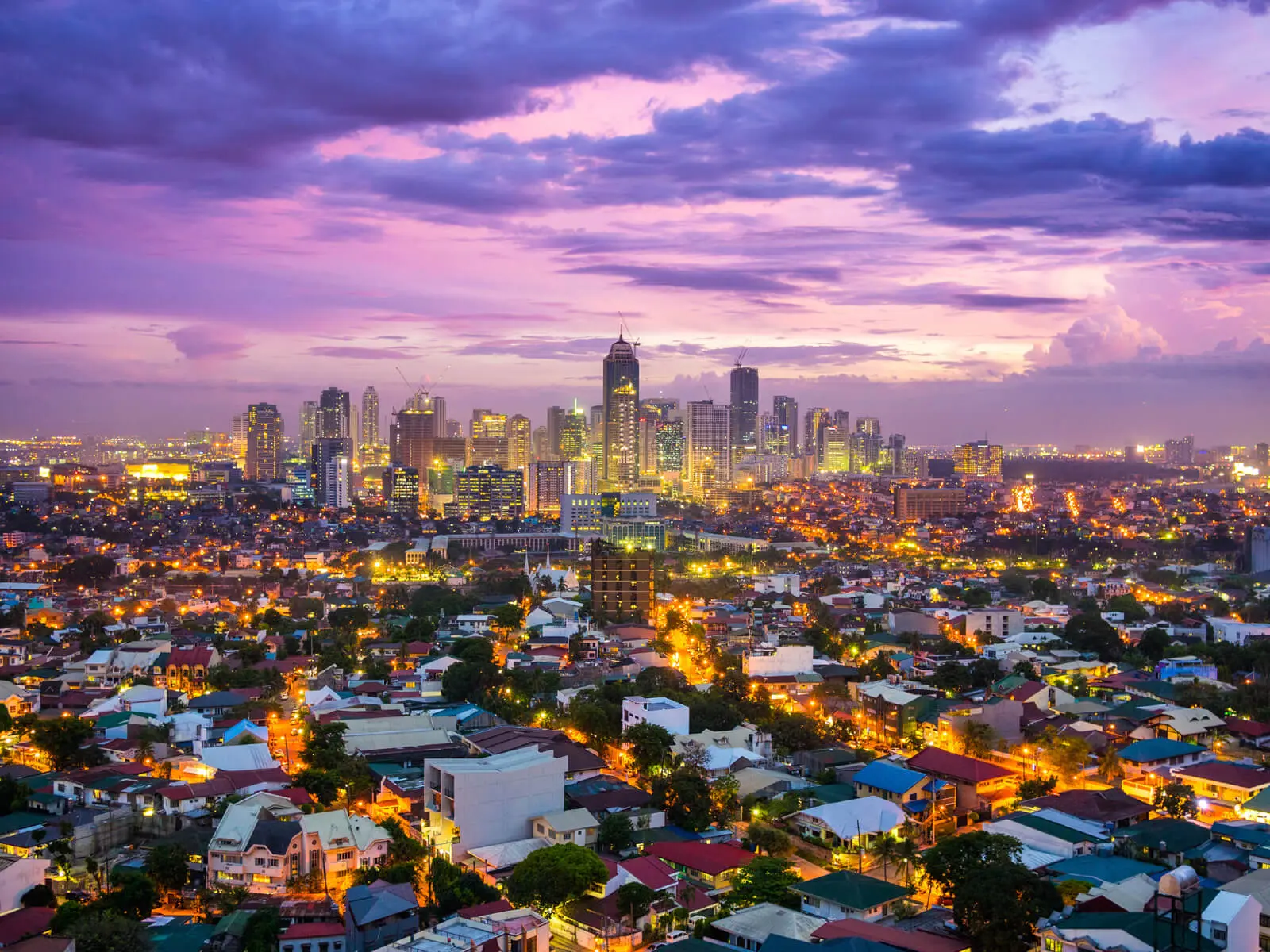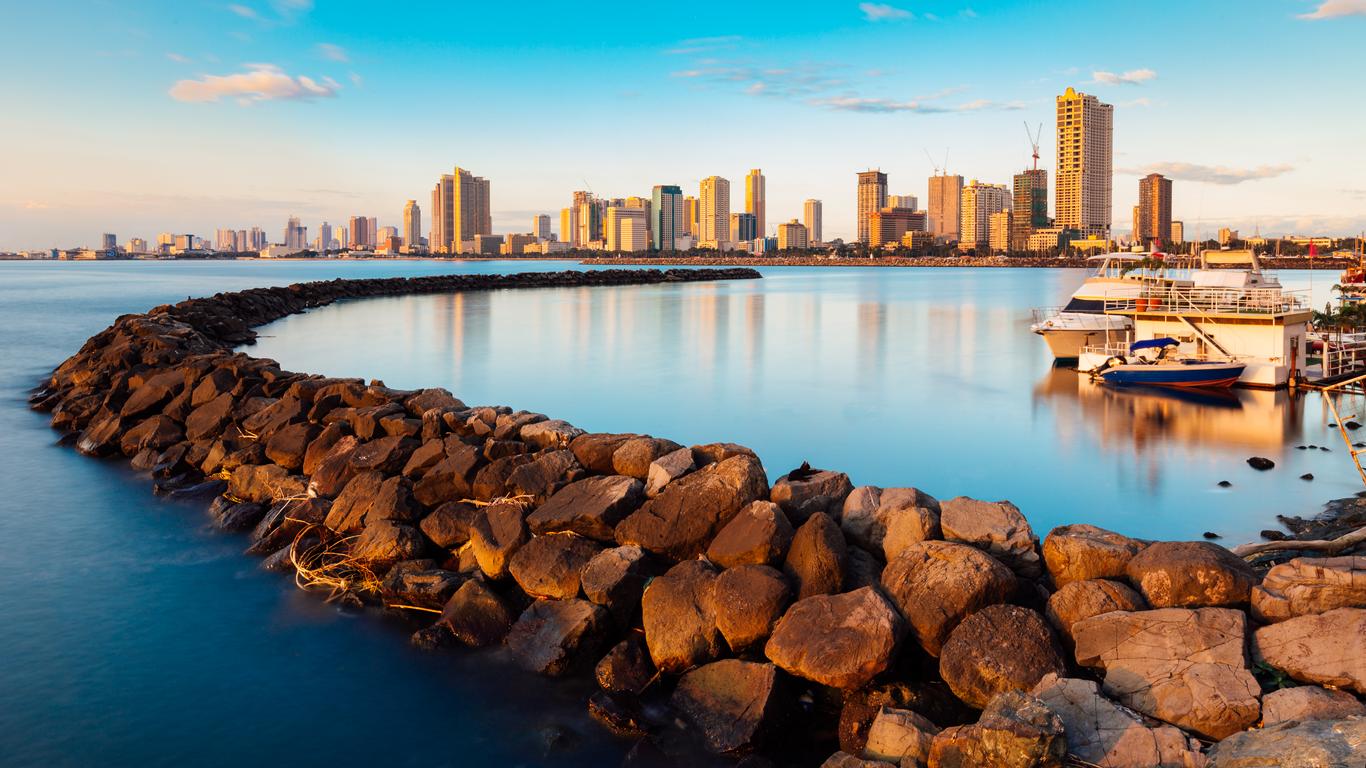



Manila, the capital of the Philippines, is a densely populated bayside city on the island of Luzon, which mixes Spanish colonial architecture with modern skyscrapers. Intramuros, a walled city in colonial times, is the heart of Old Manila. It’s home to the baroque 16th-century San Agustin Church as well as Fort Santiago, a storied citadel and former military prison. ― Google
ZIP code: +900 – 1-096
Area: 38.55 km²
Administrative district: 16 city districts
Barangays: 897 (see Barangays and districts)
City charter: July 31, 1901
Elevation: 9.0 m (29.5 ft)
Established: 13th century or earlier
November to February:
This is the ideal time to visit Manila, as the weather is cooler and drier. The temperatures are more pleasant, and it's perfect for sightseeing and outdoor activities.
Best for: Exploring the city, attending festivals, and enjoying the outdoors.
March to May:
This period can be quite hot and humid, especially in April and May. However, it is still a popular time for tourists due to summer holidays in the Philippines.
Best for: Enjoying beaches and water-based activities.
June to October:
The rainy season, with potential typhoons. While it can be a less crowded time to visit, it is not ideal for outdoor activities.
Best for: Indoor attractions and cultural experiences.
By Air:
Manila is served by Ninoy Aquino International Airport (NAIA), which is the main international gateway. It has direct flights from major cities worldwide, including North America, Europe, and Asia.
From the airport, taxis, Grab (ride-hailing), and shuttle services can easily take you to the city center.
By Sea:
Manila has several ports, and you can travel by ferry from nearby islands such as Cebu, Bohol, and others.
By Bus:
Manila is well-connected to other provinces through several bus companies offering long-distance services. You can reach the city from nearby areas such as Quezon City, Taguig, or Cavite by bus.
One of the most iconic historical parks in the country, dedicated to the national hero Dr. José Rizal.
The park features monuments, gardens, and the Rizal Monument, marking the spot where Dr. Rizal was executed.
The historic walled city, which served as the seat of government during the Spanish colonial period.
Key attractions here include Fort Santiago, San Agustin Church, Manila Cathedral, and Casa Manila Museum.
Comprising several museums like the National Museum of Fine Arts, National Museum of Anthropology, and National Museum of Natural History, it offers a deep dive into Filipino history, culture, and art.
A marine-themed park offering exhibits on marine life, with highlights such as the Oceanarium, Shark and Ray Encounter, and Interactive Aquariums.
One of the largest malls in the world, offering a vast selection of shopping, dining, and entertainment options.
It also has an ice skating rink, seaside promenade, and regular events and performances.
The world’s oldest Chinatown, established in 1594. It offers a mix of history, culture, and incredible Chinese food.
Visit the Binondo Church, stroll through its bustling streets, and sample delicious dim sum and local treats.
A hub for the performing arts, showcasing Filipino and international performances.
It hosts events such as ballets, theater plays, music concerts, and dance shows.
Explore Intramuros: Walk through this historic walled city, visit museums, and take a kalesa (horse-drawn carriage) ride for a nostalgic experience.
Take a sunset cruise on Manila Bay: Enjoy stunning views of the sunset while cruising along the iconic Manila Bay. It's a popular way to unwind.
Shopping and dining at SM Mall of Asia: Spend time shopping for international and local brands, and enjoy dining by the sea.
Attend a cultural performance: Check out a show at the Cultural Center of the Philippines or one of the smaller theaters offering plays, musicals, and local performances.
Visit the National Museum Complex: Explore Filipino heritage through art, history, and culture.
Stroll in Rizal Park: Relax and enjoy the green space, monuments, and lakes. It’s also a great place for a family picnic.
Luxury:
Sofitel Philippine Plaza Manila – A luxury hotel by the bay with beautiful views, an outdoor pool, and excellent dining options.
The Peninsula Manila – A five-star hotel with spacious rooms and a prime location in Makati, close to shopping and dining.
Mid-range:
Hotel H2O – A unique hotel in Manila Ocean Park, offering rooms with stunning aquatic views.
Bayview Park Hotel – A well-located hotel offering good value for money with views of Manila Bay.
Budget:
Red Planet Manila – A budget-friendly chain offering comfortable rooms in the city center.
Lub d Manila Makati – A stylish and affordable hostel ideal for young travelers.
Must-try dishes:
Adobo: A savory dish made with pork or chicken, marinated in vinegar, soy sauce, garlic, and spices.
Sinigang: A sour tamarind-based soup, typically served with pork, shrimp, or fish.
Lechon: Whole roasted pig, a Filipino delicacy, often served during special occasions.
Pancit: A type of noodle dish, typically served during celebrations.
Halo-halo: A popular dessert made with crushed ice, sweet beans, fruits, jellies, and leche flan, topped with purple yam.
Top dining spots:
Binondo (Chinatown): For authentic Chinese-Filipino cuisine, from dim sum to noodles, visit famous restaurants like Lugang Café and Dong Bei Dumplings.
The Spiral at Sofitel Manila: An upscale buffet restaurant offering a wide selection of global cuisines.
Ristorante Delle Mitre: A restaurant offering traditional Filipino food with historical significance.
Manam Comfort Filipino: A modern take on Filipino comfort food with both traditional and contemporary dishes.
Historical significance: Manila is the birthplace of many pivotal events in Philippine history, including the Philippine Revolution and its declaration of independence.
Festivals: Manila hosts numerous festivals, such as the Ati-Atihan Festival, Chinese New Year celebrations, and Pista ng Maynila, which celebrates Filipino culture and tradition.
Arts and culture: The city is home to many art galleries, theaters, and performance venues. The Cultural Center of the Philippines is a major hub for the performing arts.
Religious practices: As the Philippines is predominantly Catholic, there are numerous beautiful churches and religious sites in Manila, including the San Agustin Church and Quiapo Church.
Music and entertainment: Manila is also known for its vibrant music scene, with various clubs, live music bars, and karaoke spots.